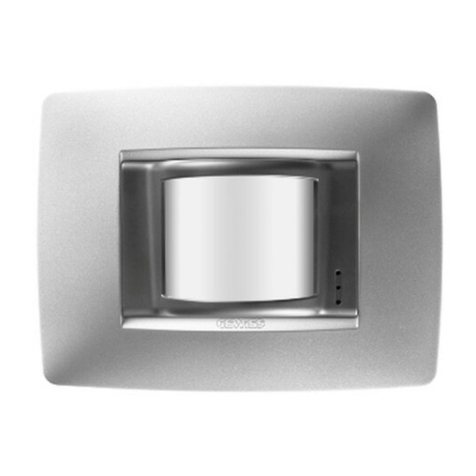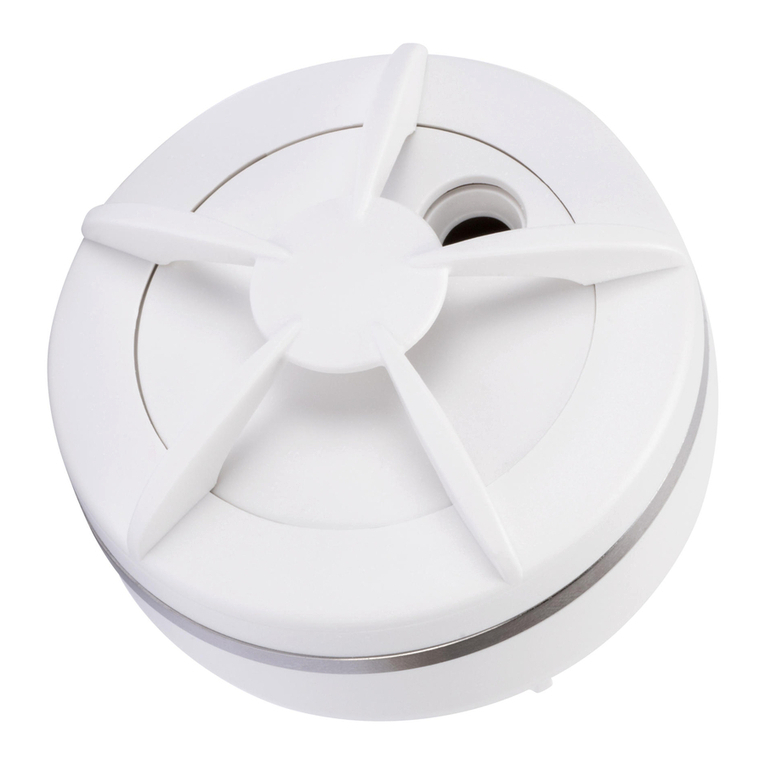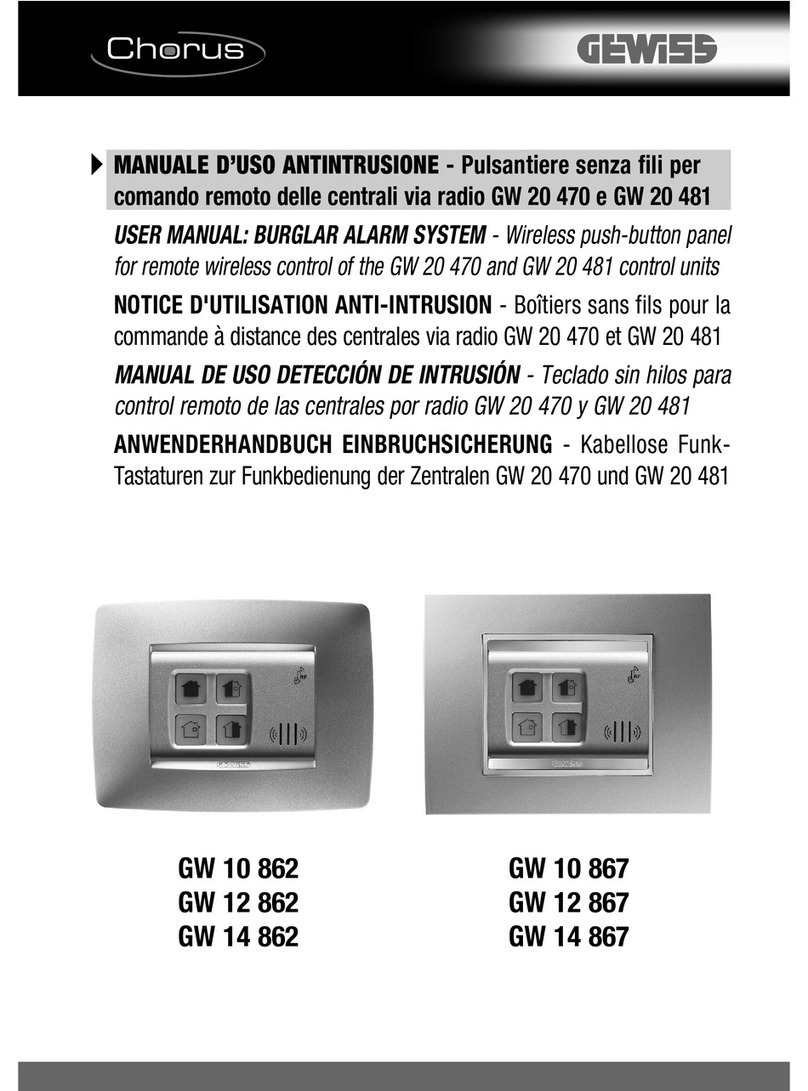I
T
A
L
I
A
N
O
1. GENERALITÀ
La sirena in oggetto è utilizzata con efficacia come avvisatore acustico autoalimentato per esterno in impianti
senza fili, il suo modulo di comando funziona in AM per il collegamento con una centrale compatibile come ad
esempio il mod. GW 20470 e GW 20471.
Il contenitore è in NOVODUR con sviluppo a basso profilo, il coperchio incorpora un lampeggiatore con spie a
led ad altissima luminosità ed efficienza, la personalizzazione estetica puo' essere effettuata apponendo
un'etichetta con il logo della ditta installatrice sull'apposito spazio frontale.
L’autoalimentazione è fornita da un Battery Pack con batterie al litio.
L'attivazione avviene tramite impulso radio codificato (un codice su 34 miliardi di combinazioni) trasmesso dalla
centrale, un temporizzatore di emergenza fissato a 1 minuto blocca l’attività della sirena in caso di guasto della
centrale o del ricevitore; è dotata infine di autoprotezione con attività sonora locale fornita da un microinterruttore
antimanomissione contro l'apertura del coperchio frontale e la rimozione dal muro.
Il lampeggiatore frontale è attivato in sincronia con la sirena, tuttavia, per informare più compiutamente l'utente
finale sullo stato di attività della centrale radio, fornisce anche le seguenti informazioni:
- Centrale inserita = tre lampeggi
- Centrale disinserita = accensione continua per circa tre secondi.
Modello: GW 20490 Blocco sirene alla
richiusura del Tamper: 1 minuto (in questa fase
non riconosce alcun comando).
Livello di prestazione: II° Attivazione del
lampeggiatore: In sincronia con l'attivita' sonora per
allarme, visualizzazione dello stato
operativo della centrale.
Grado di protezione: IP34 Numero lampeggi: Circa 50 al minuto.
Montaggio: SMD Ricevitore: Modulo AM.
Tromba: Tipo magnetodinamico da 4 Ohm Frequenza operativa: Frequenza europea per apparati LPD.
Tensione nominale: 7,2V Antenna: Antenna ceramica ad alto rendimento.
Tensione minima di
funzionamento: 4,5V Sensibilità: -90dB
Alimentazione da: Battery Pack al litio da 7,2V LSH20. Trame ricevute: 3 trame in 9 secondi.
Assorbimento
a riposo: 300 μA medi Codice digitale: 1 codice valido su 34 miliardi di
in allarme: 730 mA @7,2V combinazioni ad autoapprendimento.
Autonomia: 2,5 anni con 4 cicli di allarme al mese
e 4 inserimenti e disinserimenti Portata operativa: 80 metri in aria libera.
della centrale al giorno.
Pressione sonora: 94 dB a 3 mt @ 7,2V. Protezioni: Sirena protetta contro l'apertura del
coperchio e lo strappo dal muro.
Suono: Bitonale. Dimensioni: L 253 x H 290 x P 85 mm.
Attivazione: Da codice digitale ricevuto dal modulo Peso: 1,4 Kg
radio incorporato.
Ritardi di attivazione: 3 secondi da comando centrale, Temperatura di
2 secondi da apertura Tamper. funzionamento: Da -25 a +55 °C
Tempo massimo Dotazione: Viti, tasselli, battery pack LSH20,
d'allarme: 1 minuto preimpostato in fabbrica. manuale tecnico.
Tempo di stand by: 8 secondi alla prima alimentazione e
predisposizione alla programmazione.
Le centrali GW 20470 e GW 20471, la sirene GW 20490, il gruppo di sensori e gli accessori compatibili sono stati
sviluppati in armonia con le seguenti norme:
CEI 79-16, CEI 79-2, ETSI 300-220, ETSI 301 489, R&TTE 1999/05/CE, EN 50130-4, EN 55022,
EN 60950, 89/336/CEE, 73/23/CEE.
2. CARATTERISTICHE
3 GW 20490
































